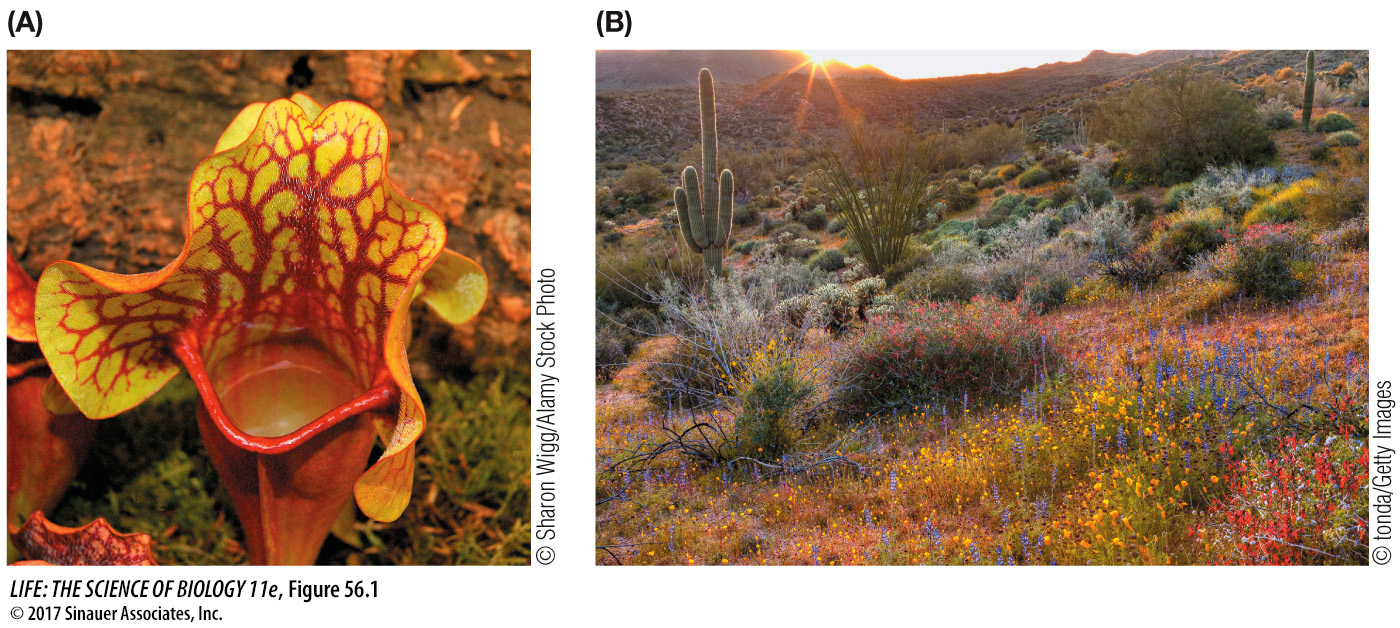key concept
56.1
Communities Are Groups of Interacting Species Occurring Together in Space and Time
key concept
56.1
Communities Are Groups of Interacting Species Occurring Together in Space and Time
In ecological terms, a community is a group of species living together at the same place and time. Interactions among multiple species and their physical environment give communities their character and function. Although each species has unique interactions with the other species in its community (as you saw in the previous chapter), ecologists often find it useful to study the properties of the community as a whole.
focus your learning
Ecologists may define communities based on taxonomy, resource usage (guilds), or functional groups.
Ecologists may define communities in terms of food webs or interaction webs.
Species diversity can be measured quantitatively.
The definition of a community given above is more theoretical than practical, in part because communities vary greatly in size and scope. For example, communities can be small and contained, such as that living within the purple pitcher plant (Sarracenia purpurea), a species common in North American wetlands (Figure 56.1A). Pitcher plants collect rainwater and are home to a thriving community of bacteria, protists, rotifers, and mosquito larvae. A community can also encompass a large geographic area, such as a desert (Figure 56.1B), where the borders of the community are not always well delineated. When borders become unclear, ecologists may designate boundaries somewhat arbitrarily, based on their ability to study the community.

Another practical problem in defining communities is determining the number of species present. Most communities contain thousands if not hundreds of thousands of species, from microscopic bacteria to towering trees. Some species are easily identified, but many others are not. Additionally, some species are present only at certain times of the year, for certain life stages, or tend to move among communities. Creating a species list for a community is a huge undertaking—